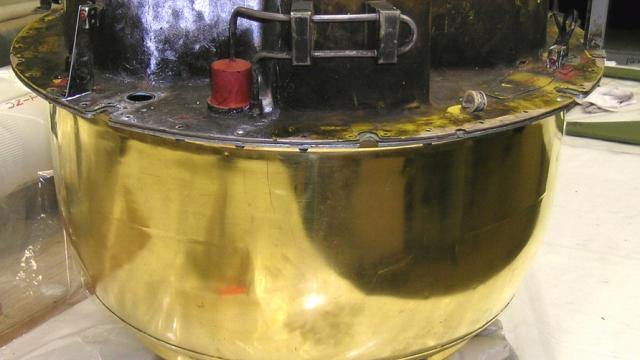In the early days of the US satellite surveillance program, our orbital cameras employed state-of-the-art technologies to get the physical film back to Earth for development and analysis. They shot it back into the atmosphere like 136kg bullets, and tried to catch the falling canisters by their parachutes using a passing plane armed with a sky hook. No, seriously.
Throughout the late 1950s and into the 1970s, the US Air Force ran a top secret spy satellite program dubbed Corona (that was the actual codename, not some convoluted acronym) to keep tabs on the Red Chinese and Soviets. The program leveraged the optical prowess of six hulking, satellites orbiting 160km above the planet, individually codenamed “Keyhole” and each armed with ever-increasingly sophisticated imaging systems. The first iterations used a single-panoramic camera measuring roughly 1.5m in length with a 300mm f/5 triplet lens, which quickly evolved into 3m long double-panoramic rigs with Petzval f/3.5 lenses by 1962.
These cameras would be loaded with a whopping 4876m of 7.6 µm-thick acetate film capable of rendering 170 lines of resolution per millimetre of film — more than three times the 50 lines per millimetre that the best plane-based images of WWII could provide. When the 136kg roll was fully exposed, the satellite would jettison the film in a specialised reentry cannister dubbed the “film bucket”. Built by GE, the film bucket measured 74cm long with a 43cm diameter. It was constructed of aluminium but clad in a gold heatshield and equipped with a parachute to break its momentum once it broke through the atmosphere as well as a salt plug that would sink the capsule to the bottom of the ocean should the US Navy not be able to retrieve it within 48 hours. That is assuming, of course, that the gently-falling parcel wasn’t first plucked from the air by a passing USAF plane’s trailing airborne claw.

Given the highly classified nature of the operation, the USAF (working in conjunction with the CIA) performed a test run of the retrieval system before entrusting actual intelligence photographs to it. As such, the record for first man made object to be recovered from orbit goes to the Discovery XIII reentry module, recovered from the seas near Hawaii on August 11, 1960. It carried a slew of magnesium-constructed instruments in lieu of film. The Discoverer XIV, however did carry film as did every Corona satellite for the next decade until the program’s termination. In all 144 Corona satellites are known to have launched and a reported 102 returned serviceable photographs. [Smithsonian – Wiki]
